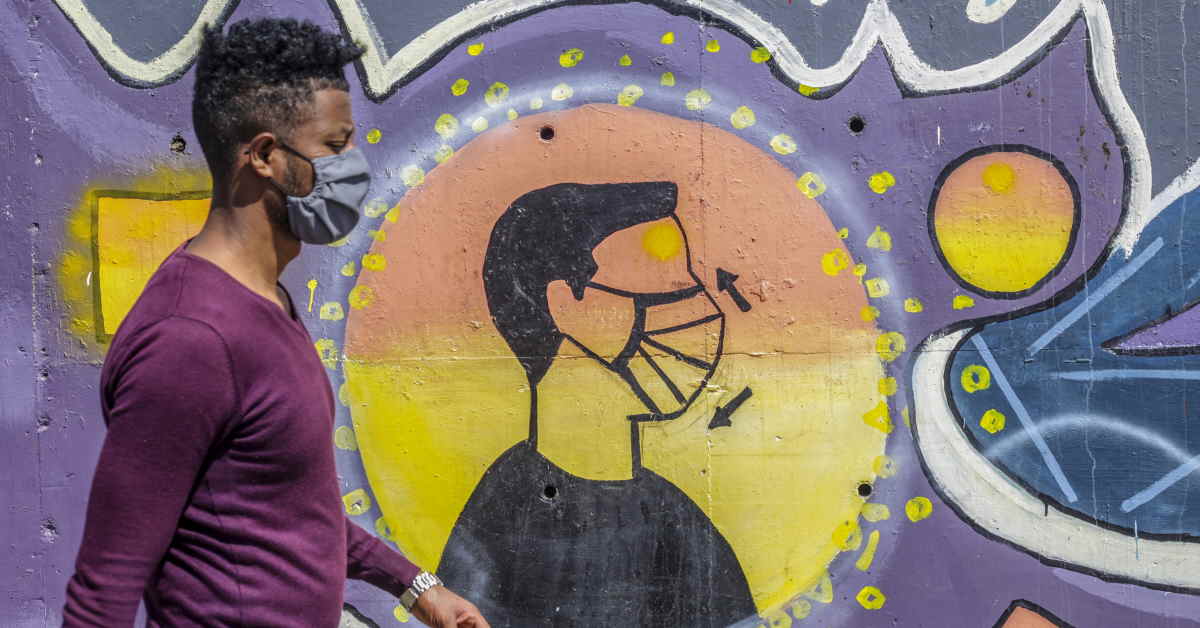More than two-thirds of people living in Africa may have contracted COVID-19 over the past two years, about 97 times more than the number of reported infections, a World Health Organization (WHO) report has suggested.
Laboratory tests have detected 11.5 million COVID-19 cases and 252,000 fatalities across the African continent. But according to the report released on Thursday, some 800 million people could have already been infected by last September.
Officials at the WHO’s Africa region said the study – which is still being peer-reviewed – suggests the officially confirmed numbers were “likely only scratching the surface of the real extent of coronavirus infections in Africa”.
“A new meta-analysis of standardised sero-prevalence study revealed that the true number of infections could be as much as 97 times higher than the number of confirmed reported cases,” said WHO Africa boss Matshidiso Moeti.
“This suggests that more than two-thirds of all Africans have been exposed to the COVID-19 virus,” she added.
The report analysed more than 150 studies published between January 2020 and December last year. It showed exposure to the virus jumped from just three percent in June 2020 to 65 percent by September last year.
“In real terms, this means that in September 2021, rather than the reported 8.2 million cases, there were 800 million,” said Moeti.
The global average of true infection numbers is believed to be 16 times higher than the number of confirmed reported cases.
With limited access to testing facilities for much of Africa’s population, many infections went undetected, as testing was mainly carried out on symptomatic patients in hospitals and travellers requiring negative PCR results.
“The focus was very much on testing people who were symptomatic when there were challenges in having access to testing supplies” and this resulted in “under-representing the true number of people who have been exposed and are infected by the virus”, Moeti told journalists.
Moeti said producing accurate data on the continent, which largely has inadequate and under-resourced health facilities, has been difficult because “67 percent” of people in Africa show no symptoms.
Young People Infected The Most
While the SARS-Cov-2 coronavirus has had a catastrophic effect on some parts of the globe, Africa appeared to have escaped the worst and was not as badly hit as initially feared at the start of the pandemic.
With weak health facilities and services, many experts had feared the systems would be overwhelmed.
Several analyses have been made of the pattern of the pandemic in Africa, with some concluding that the continent’s youthful population acted as a buffer against severe illness.
In Ghana, the WHO study established that young people were infected the most, according to Dr Irene Owusu Donkor of the Noguchi Memorial Institute for Medical Research.
Many African countries are accustomed to epidemics, but reported numbers do not always reflect the reality.
The WHO had last year already cautioned that six of every seven COVID infections went undetected in Africa.
Most COVID cases on the continent have been recorded in South Africa – with more than 3.7 million infections – which conducted the most tests and boasts of better-resourced health facilities compared with most sub-Saharan African countries.
Even so, its official COVID death toll is believed to be much lower than the actual numbers of people killed by the virus.
The latest data compiled by the South African Medical Research Council shows the number of deaths could be triple the reported figures.
South Africa recorded 303,969 excess deaths from natural causes between May 3, 2020 and last Saturday – yet official figures show that COVID killed 100,075 people since the start of the pandemic.
